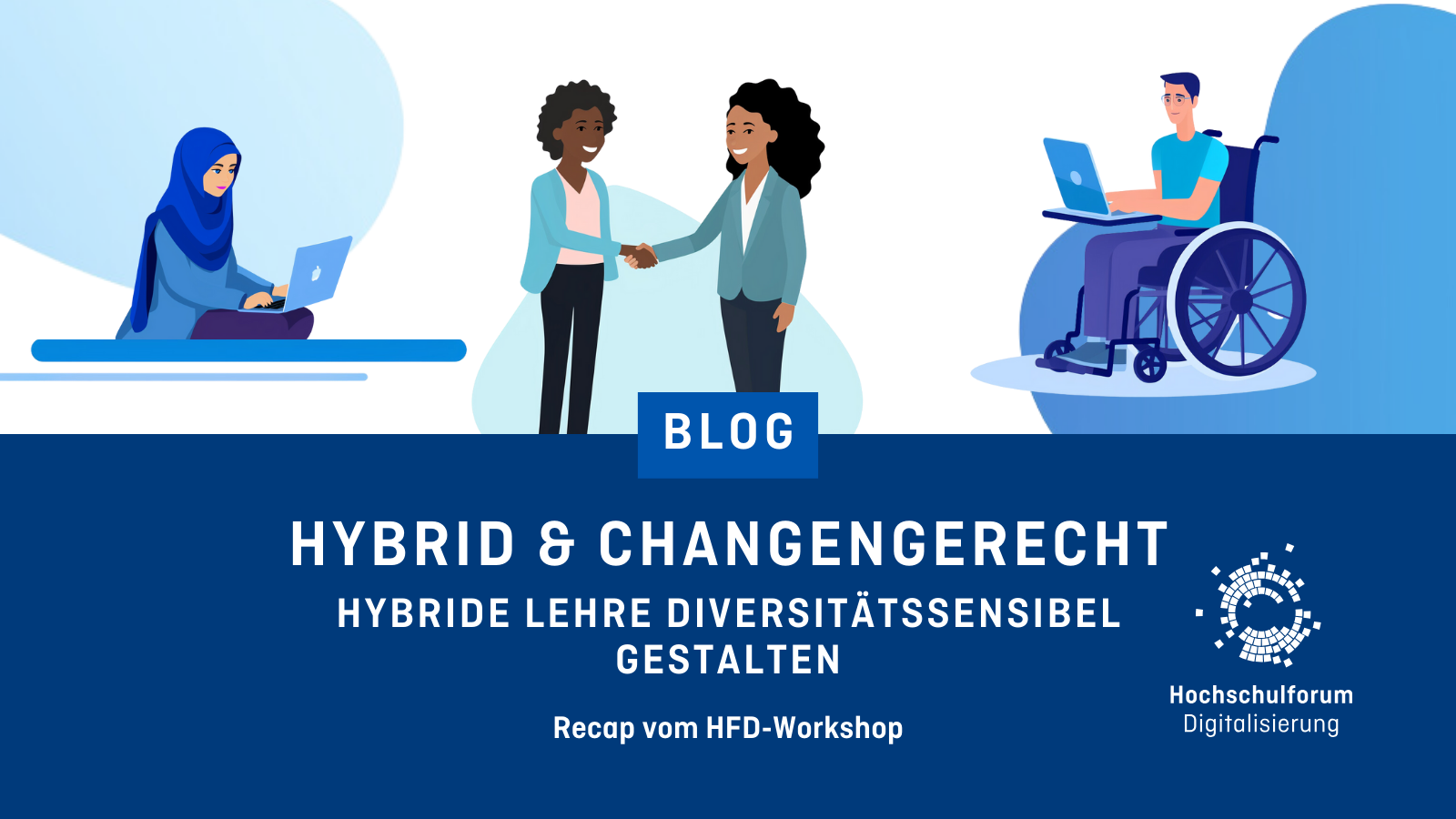South Korea’s Digital Universities: Learning for Industry 4.0
South Korea’s Digital Universities: Learning for Industry 4.0
06.12.19
High Tech is the flagship of South Korea. For the Asian region, the country’s progress in online education at universities is exemplary. But the demands of the digital age require approaches that cannot be solved by technology alone. Lisa Messenzehl’s article portrays Korea’s digital higher education in the balancing act between technology and Confucianism, competition and open education.
This article was automatically translated using DeepL Translator. Please excuse any errors.
![Just enjoy the view? Panorama of Gangnam quarter in Seoul, Korea. Picture: [https://unsplash.com/photos/Xqr87FWe9e0 Elle Morre] Mädchen in U-Bahn mit Ausblick auf Gangnam im Hintergrund](/sites/default/files/images/blog/photo-1558920558-feb6e762d597.jpg)
Jiyoon’s left hand jumps over the neck of his instrument with ease. His dense, golden-brown hair falls to his face. He looks satisfied. The 41-year-old wears shorts, socks, slippers and a black T-shirt with the imprint “I’m feeling good”. Jiyoon, guitarist, raised in Seoul, plays in one of the practice rooms at the Department of Jazz and Contemporary Music, which belongs to the Seoul Digital University. It’s a Tuesday in September. Outside, the Korean metropolis pulsates in the afternoon heat, but no daylight penetrates into the basement of the building with a dozen floors. Here it is pleasantly cool.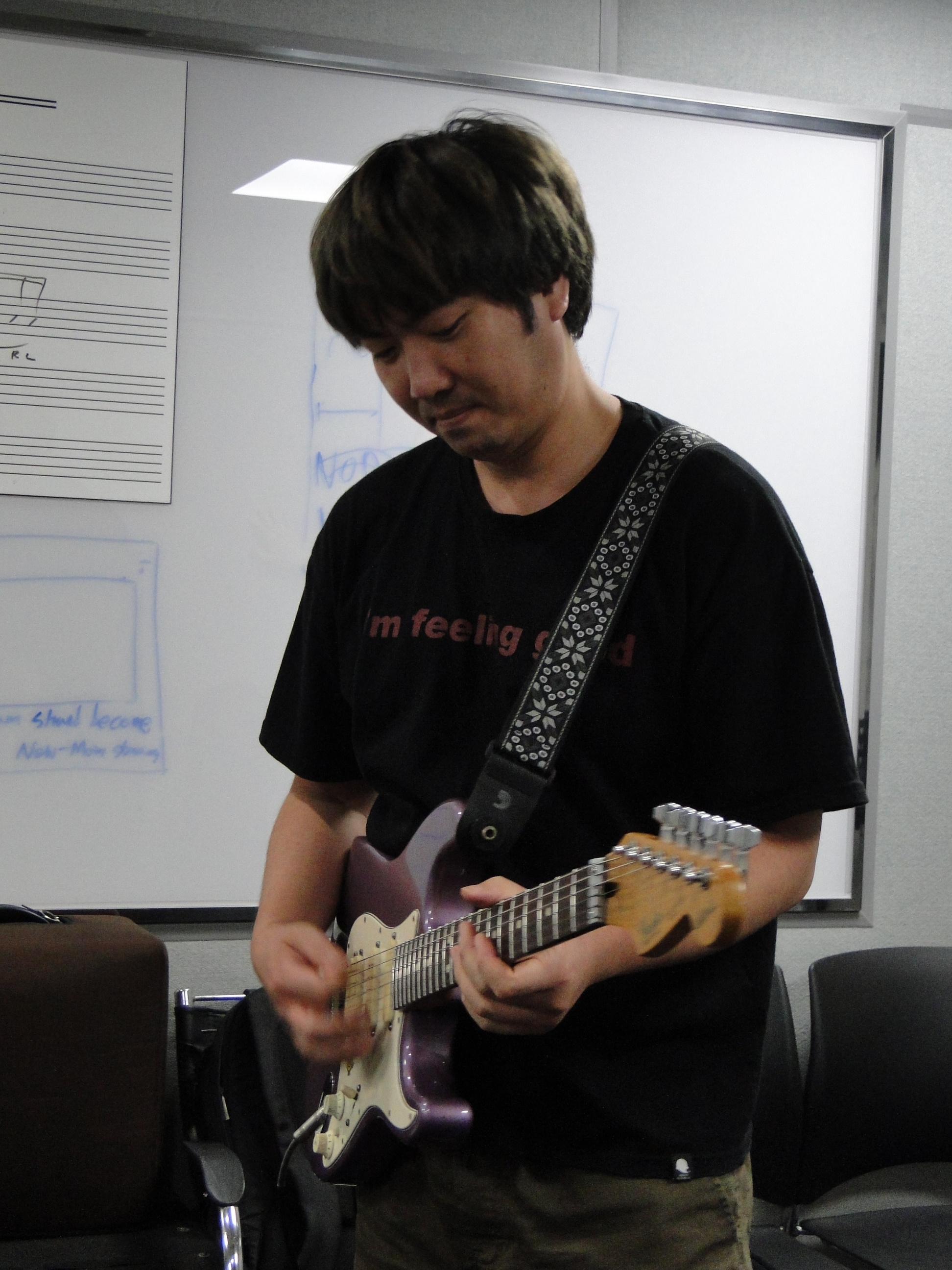
A good two years ago, Jiyoon completed his bachelor’s degree here. In addition to his bands, he now works as a supervisor for the students, online as a tutor and offline as a coordinator for the rehearsal rooms. His educational career is typical for graduates of an online university in Korea, mostly the digital way is chosen for further studies. First he studied music for two years at a normal university in Seoul, and most of the time he was lazy, he says. His family had nothing to do with music, yet he dragged himself to the Associate Degree, which can be achieved after two years. A few years later, according to Jiyoon, he discovered the advantages of studying online: he could choose his own focus and align it with his interests. He could watch learning videos five times, at home or on the go, if he wanted to repeat the content. He also played his age into his hands: he now knew better what he wanted to learn and could therefore concentrate better on it, he admits with a wink. But the workload of his studies was high.
There are no students here this afternoon, which is normal. 700 students are enrolled at the department, but less than ten percent occasionally come to the practice rooms. It’s a voluntary offer that most people can’t take advantage of because they don’t live in Seoul. They don’t have to come here a single time. The study programme is completely online, also for the other 40,000 students at the university.
Lifelong learning
The age range of students at the Department of Jazz and Contemporary Music is large. From the 18-year-old high school graduate to the 70-year-old retired musician, everything is there, says Professor Bumjoon Lee, who is responsible for the study program. The target group also includes monks, priests and nuns. The course is a prime example of lifelong learning. But the heterogeneity of the students is also a challenge, notes Bumjoon Lee, because the needs are very different. Learning is done with videos, interactive virtual seminars and classic online tasks that learning management systems have to offer. In practice-oriented subjects such as music, students record how they play their instruments and show their skills via video upload. Other application-oriented areas, such as the Department of Childhood Education, handle it in such a way that students have to complete a certain amount of internships.
Professor Pilky Hong, the Dean of Studies, is proud that people who have goals and visions enrol at this university. They really want to learn, he says, and don’t just come to get credits. Otherwise, as has often been said, the Korean education system suffers from a final doggedness. The costs for studying at the private Seoul Digital University are kept within limits: you pay the equivalent of 50 Swiss francs or 45 euros per credit. There are also scholarships.
19 Cyber universities
Instead of classrooms, video studios are lined up in the Seoul Digital University building. Some are furnished in the style of venerable professors with solid wood desks and bookshelves, others are simple TV studios with flexible green screens. The studio fleet’s mandatory program also includes a room for fitting and masks. The appearance in front of the camera is not left to chance, beauty has a high value in Korea. The design of both the videos and the course didactics is determined by the respective teacher.
The process for conception and quality control is precisely defined and accompanied by specialists. A team of 30 people supports the teachers in the technical production of the teaching & learning materials. The setting found at Seoul Digital University is not unique, as it is only one of 19 cyber universities in South Korea, a country with almost 52 million inhabitants. Many were created at a time when PC pools were being expanded at universities in German-speaking countries because not all students had their own laptops, let alone an Internet connection at home. In 1998, the Korean government launched a pilot project with the first five cyber universities, each of which emerged from private organisations. They were supposed to cover the increased need for further training. For this reason, their courses are largely geared to skills that are needed in professional life. Today, new institutions offering distance education are constantly being added, partly as offshoots of conventional universities.
The history of online colleges is a testimony to the rapid pace at which digitization has developed in Korea, taking all sectors and layers of society with it. According to a 2019 study, in no other country in the world is the proportion of adults who own a smartphone higher than in Korea: 95%. Technology has brought prosperity to the country, the tech companies LG and Samsung are symbolic of Korea’s success and modernity. It is the political framework that has made technology the pacemaker for innovation. This applies in particular to schools and universities. Today, e-learning experts and public decision-makers, especially from emerging Asian countries, are making a pilgrimage to the high-tech Mecca of Korea to learn how to digitize instruction. The fact that it was the first country in the world to put a 5G network into operation in 2019 fits in well with the picture. Korea is also a blueprint because it has undergone rapid economic development within a few decades.
From 0 to 100: Digitization via centralism
In the 1950s, after the Korean War, South Korea was still one of the poorest agricultural countries in the world. As it has hardly any natural resources, education was given the role of the most important capital for economic value creation at an early stage. Accordingly, politicians invested their financial resources, especially in the expansion of the higher education system. Today Korea has more than 350 universities, and the rate of academization is immensely high. According to OECD statistics, Korea is the world leader in this respect: over 59% of 25-34 year olds have a tertiary education. Just as the governments managed to get universities all over the country to spring up from the ground, the digitisation of teaching and learning was driven forward in a target-oriented manner. ![Every time has its own information and communication technology. Picture: [https://unsplash.com/photos/71CjSSB83Wo Pavan Trikutam] dial telephones](/sites/default/files/images/blog/pavan%20trikutam.jpg)
With a centralist education policy, structures were created and measures implemented whose results in Europe can only be rudimentarily compared with Scandinavian countries. Equipping schools and universities with the latest ICT infrastructure, but also with the corresponding know-how, is being launched at national level in Korea. As a result, primary schools in the country’s most remote provinces are provided with powerful computers and access to programs that digitally support school operations: from WLAN Internet to the Learning Management System and software for school organization.
In education federalism, one can only dream of these equal conditions, the digital pact sends greetings: While in Germany in 2019, nationwide funding guidelines for better equipment in general schools have finally been adopted, in Korea, within the framework of the sixth edition of the ICT action plan, textbooks for the middle school are currently being revised in e-book format and learning analytics methods on the basis of artificial intelligence are being tested. Even the manageable country of Switzerland did not struggle until 2017 to establish educa.ch in order to exploit synergies for platforms in the school sector that are needed throughout the Swiss Confederation. The infrastructure issues that e-learning people in Western countries still have to deal with are already a thing of the past for Korea.
Navigator for the Education of the Future
Today the landscape of digital and distance education in Korea is very diversified, there are offers for every need and different target groups. The engine for the digitization of education in Korea is called KERIS: a government institution that the Ministry of Education set up in 1999 with the aim of merging ICT and education at all levels. KERIS is also called “Navigator of Future Education” because it wants to be understood as a think tank and not only as a service provider. The list of topics, regulations, strategies and projects implemented is long. It includes national school information systems, advice on copyright issues, the introduction of programming skills in primary schools, e-learning and ICT training for teachers, online modules for middle and high school students, cyber attack protection programmes, digitisation of school libraries, an online platform for the exchange of creative teaching methods and learning content, an online portal for study with disabilities, evaluation tools for digital skills, health and ethical aspects of digital media use – to name just a few examples. (Read more: White Paper on ICT in Education Korea).
The Korean equivalent of the Swiss NEBIS database is called RISS and is also managed by KERIS. All final theses of students in Korea are fed into RISS. In addition, KERIS has launched joint services for universities, such as the ten e-learning support centres between 2003 and 2007. The idea was to produce e-learning materials and use them at several universities, for example for basic subjects. However, the institutions were not permanent and the competition between the universities was too great.
In between discipline and performance burnout
And yet: the fact that Korea has freed itself from poverty and developed into a modern technology state within a very short period of time is not only the result of political measures. Respect for social hierarchies, discipline as well as the putting of one’s own needs behind those of the general public characterize the social system, which partly refers to Confucianism. Confucius (ca. 500 B.C.) held the progressive view for that time that education should be accessible to all. However, his teachings also praised strict order, harmony and humility. The “humility” of the population also played into the hands of the military dictatorships of the 60s and 70s, under which the economic upswing really took off. One works persistently, follows instructions as a matter of course and usually does not question the sense and purpose of one’s own actions. This behaviour is also expressed in teaching and learning.
Think of schools in Korea and the first thing you will probably associate with them is not paradisiacal conditions for e-learning enthusiasts, but the great pressure to perform in schools. The drill in the educational system of the Asian tiger states has often made it into the Western media, hailing criticism. On one side of the coin are the good results of the PISA study, on the other the high suicide rate among young people, as is the case in Korea. The reason is not to be looked for only in the school stress, but it is really in such a way that already children swot daily into the late evening hours in Nachhilfeeinrichtungen. The better the grades, the more likely it is to attend a high school that promises good transition rates to the best universities in the country. Social contact does not remain unaffected by the competition. Parents report how friendships suffer under the competitive pressure.
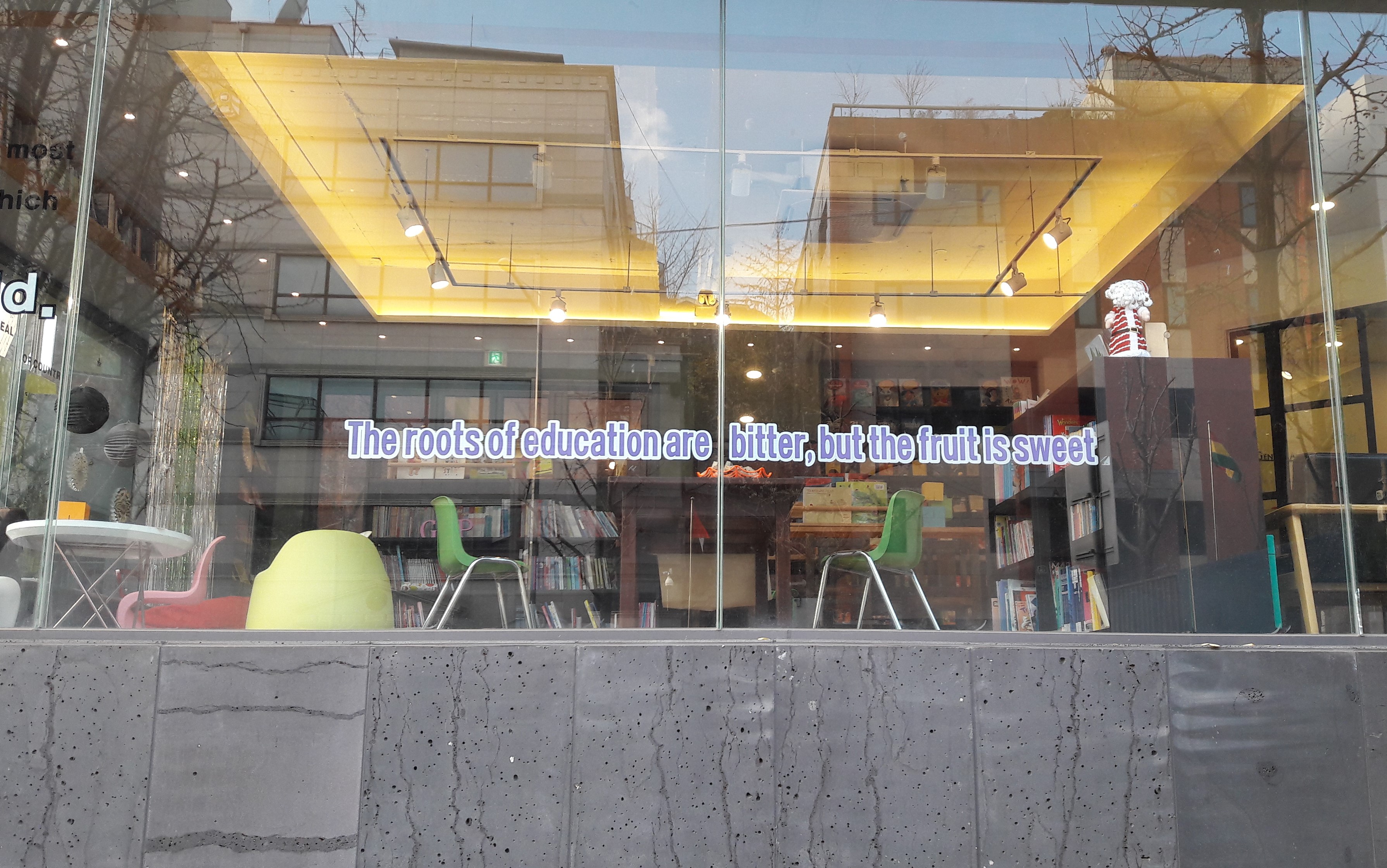
Young people’s lives are completely focused on the one day when they will take the entrance exam for the universities. On this day – it bears the name Suneung – not only open the shops all over the country later, so that the candidates don’t get stuck in the traffic chaos. On this day, the future of half a million high school students is decided every year. Only the best make it to the renowned, top-ranked universities. After graduating, employers complain about a lack of independence and problem-solving skills. The focus is often on the quantity of work – working hours – and not on quality – performance. Foreign bosses are often surprised at poor English skills and powerless at the lack of self-responsibility of their Korean employees. Many graduates do not even find a job with their qualifications, there is a surplus of academics.
How does all this fit in with Korea’s technological leadership? Is digitalization partly to blame for the sore spots? Further answers can be found at the College of Education at Seoul National University. It is the elite university of Korea par excellence. Its students are not only known for their outstanding research. They were also politically important in the past and took to the streets for more democracy.
Seoul National University
The noise of the big city has vanished into nothing in one fell swoop. The Gwanak Campus of the Seoul National University is nestled between two mountains in the southern part of the metropolis. For the size of the university, the area seems oversized: almost 30,000 students study and conduct research in an area of over five square kilometres. Small groups of young adults can be seen discussing in seminar rooms through the windows of the College of Education. In the hall-like foyer, a student with a curler in her hair sits in front of her laptop. She doesn’t seem to mind the simple, somewhat impersonal ambience. Professor Cheolil Lim’s small office is modest for someone who has an important voice in Korea when it comes to the future of education. The meeting table is squeezed between overcrowded bookshelves. Cheolil Lim is represented in all of the country’s major committees that advise policy-makers on education issues. He previously headed the Department of Education at Seoul National University. He is currently president of the Korean Society for Educational Technology, co-chair of the Ed-Tech Forum and vice president of the Academy of Creativity Korea. The positions fit well with his research focus.
“We have been very good at providing quality education so far, especially in primary school,” begins Cheolil Lim, “If you attend a primary school, you might be surprised at the many learner-centred activities. The primary school is very good and can be measured worldwide. But from the middle school it gets a bit worse, because from then on the pupils are forced to attend a good university later. That’s why they have to learn very hard. For this reason, more teaching-centred, “government-controlled” forms of teaching dominated.
“Collaboration skills in Korea are quite problematic. Individually, the people are quite good, but they have not been taught enough to work together,” continues Cheolil Lim. Even graduates of the Seoul National University are criticized for this. The students themselves prefer lectures to project work. But with the fourth industrial revolution – a buzzword that government circles would also like to use – new skills such as creativity and programming are needed. For the past ten years or so, the government has been trying harder to break new ground. “Education needs to support the future” says Cheolil Lim, but Korea is still struggling.
Conformity and consumer orientation
It is paradoxical: In this very progressive country, the combination of competitive performance and adaptability is becoming the downfall. Obviously, individuality is shunned in Korean society, it is not part of cultural self-understanding. Anyone who travels the country will also be struck by consumer orientation. The status is shown by externalities. The pursuit of the perfect surface is reflected in the beauty industry, which is booming in Korea. This is aimed equally at men and women, with the latter also being confronted with traditional gender roles.
If everyone wants to be like everyone else, it is not child’s play for the individual to take a self-confident and ambitious path that builds on one’s own strengths. Often the family conventions and expectations make the career choice, not the own interests. So it is no wonder that sometimes the impression is created that digitality in Korea or its excessive use compensates for a general helplessness. It is often said about Korea that economic development has gone too fast. Too fast for socio-cultural development. However, the times when the country could work its way up through pure diligence are over. Economic growth has slowed recently. As a production location, it has long been too expensive compared to neighbouring Asian countries. Knowledge will probably be the most important economic factor in the future.
Co-Creation by Technology: Ways forward
The educational elite of Korea is aware of the fist in their neck. This becomes clear at the international conference “E-Learning Korea”, organized annually by the Ministry of Education and KERIS. Nearly 1000 participants from politics, education, research and economy will take part in 2019 and exchange their views for two days not only about the newest educational technologies, but also about the future of the educational system. The venue is the COEX Congress Center in Gangnam, the place to be for young, aspiring city dwellers. The programme booklet lists mainly speakers from Korea and Asia, occasionally also from the USA, Australia and Europe. There are lectures by Google and UNESCO as well as a conference track exclusively for people from the authorities. Parallel to the conference, Ed-Tech companies at a trade fair, also in COEX, will be promoting their latest products and services for the domestic education market: digital learning games for kindergarten and school, hardware for video studios, VR simulations, LMS solutions and countless robot kits for learning to program.
The atmosphere is subdued, the carpets in the wide corridors in front of the conference rooms seem to swallow the participants a bit. Anyone used to lively networking during coffee breaks will notice how little people talk to each other here. The atmosphere seems almost nervous and tense. In addition to the many success stories about the use of digital media in the classroom, there are large and still unanswered questions in the room that cause uncertainty: How will the education system develop in the digital age? Will the Korean universities succeed in producing not only high graduate rates, but also masses of good and motivated minds who are in demand on the global job market?
Professor Chang Kyung Kim from Hanyang University complains in his keynote that the Korean education system focuses on solving problems with already known answers instead of tackling unsolved problems. The fourth industrial revolution was supposed to cause “the death of exams and lecture halls”. Instead of grades, one needs collective and artificial intelligence, as well as the possibility for students to design their educational path individually. Prof. Sang Hoon Bae of Sungkyunkwan University says the biggest mistake is that there is no connection between what is taught in schools and colleges and what students need in the real world. At the same time, he is convinced that Generation Z will change the university landscape: “The user will change the setting”.
The importance of higher education degrees could change rapidly as a result. Finally, Nicolas Sadirac’s lecture on L’Ecole 42, a network of IT schools, counteracts the Korean education system. These schools do not require high school degrees from the interested parties, the acquisition of competence is based entirely on peer-to-peer methods and project-based learning. The credo is co-creation: solve problems together and without competitive thinking and thereby create collective intelligence. This has a lot to do with openness. Openness in the sense of free access to education, of unlimited and free availability of learning materials thanks to their digital nature. Korea has a long experience with this, as the Korean National Open University and other initiatives in the field of Open Education show.
Open Education par Excellence
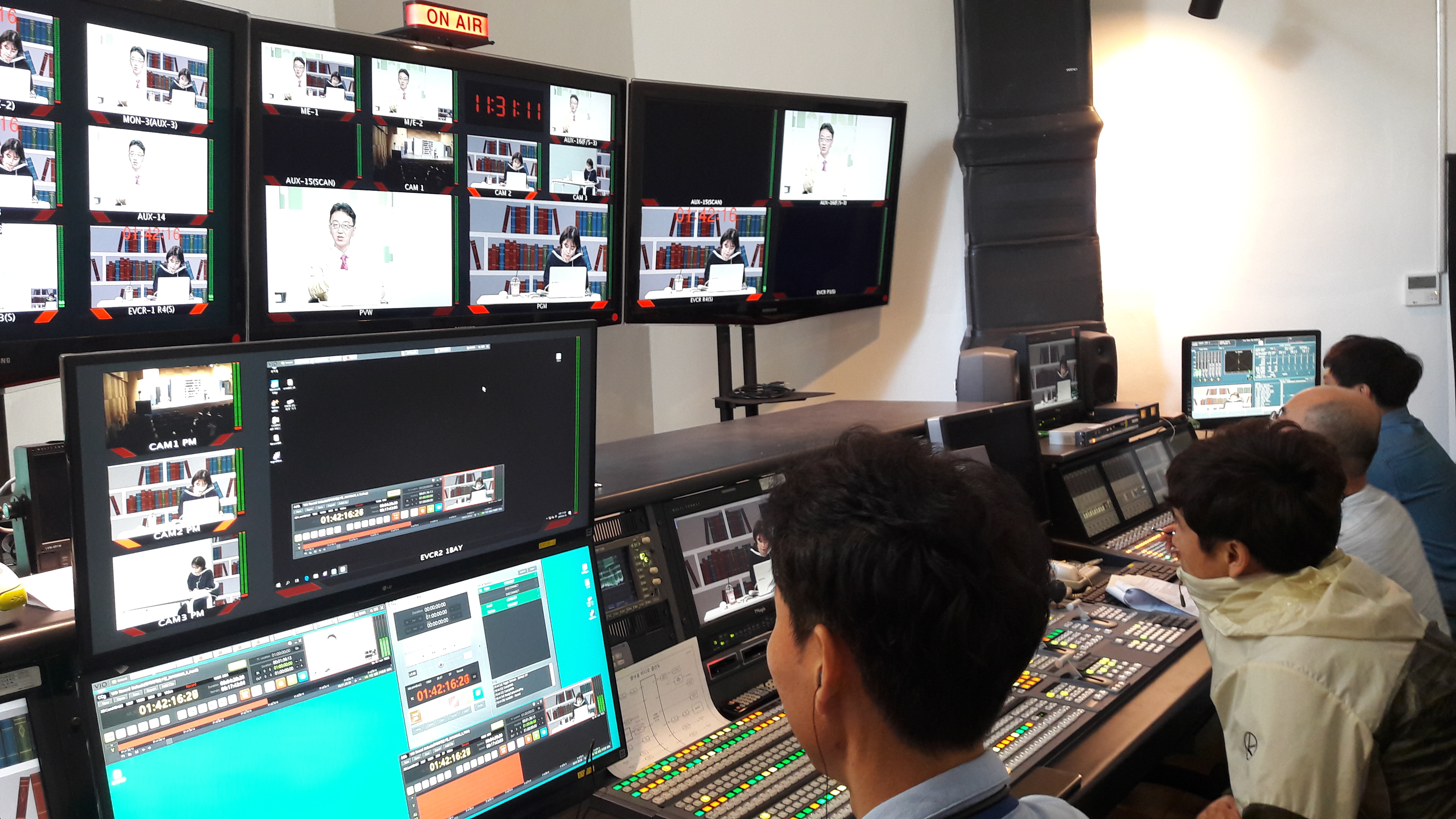
He’s got something of a professor out of a picture book. In his office, hundreds of books and CDs have accumulated all over the place, and there is also a keyboard in the corner. It is said that only a true genius controls the chaos, and the genius likes to spend a lot of time in his room at the Korean National Open University (KNOU). Professor Jin Gon Sohn knows the KNOU and his Department of E-Learning, where he teaches Educational Technology, like the back of his hand. He helped build the department and has been monitoring developments for more than a decade. The KNOU was founded in 1972, at about the same time as the Open University in Great Britain. It is one of the ten largest distance education universities in the world. Since then, it has provided Korea with cheap or free educational programs, initially via media such as post and television, and later via the Internet.
The KNOU television channel with its educational shows has remained to this day. Accordingly, the core of the KNOU at its headquarters in Seoul is an entire building full of studios: for example, studios for seminars via video conferences, which take place simultaneously with students in the 13 regional centers of the KNOU. There are also studios for the production of learning videos and studios for the broadcasting of television programmes. To date, more than 600,000 people have graduated from KNOU. In contrast to the private cyber universities, the recording procedures are not so selective. Anyone with a high school degree can enrol. “In the beginning, cyber-universities were very cooperative,” says Jin Gon Sohn with his mischievous smile, “because they wanted to learn from us how to do online courses. In the meantime, however, competition among distance education colleges has also intensified, with each trying to get a piece of the cake.
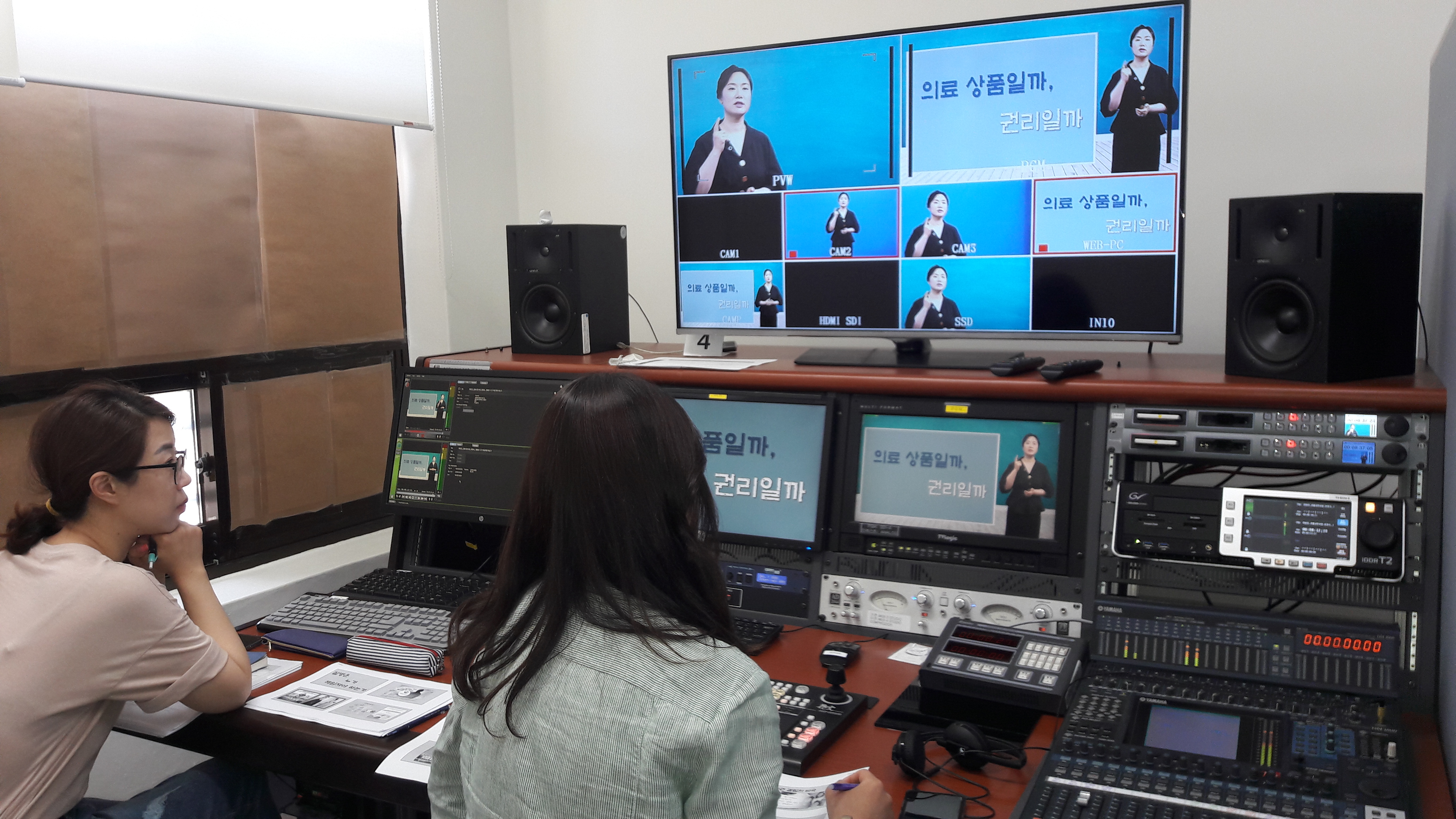
Meanwhile, the cyber-universities score points with learning structures that keep the participants at the bar until the end. In online studies at the KNOU, the classic, non-interactive MOOC format still seems to dominate to some extent, which generally accommodates Korean learners due to their trained restraint. Dr. Christian M. Stracke, who has a teaching assignment at KNOU, confirms this by telephone. He speaks of shyness. A few times he flew to Seoul to record learning videos. However, he never had contact with his students. Only at the alumni party did he get to know some of them. The KNOU is also familiar with the phenomenon of high dropout rates at MOOCs. Jin Gon Sohn is convinced that more Micro Degrees will be required in the future instead of the four-year Bachelor programmes. In addition, the role of teachers will continue to change, they will mainly be needed in the future to assess learning resources.
In addition to KNOU, Korea has successfully pioneered other initiatives in the field of Open Education. Korea Open Courseware (KOCW) is a platform that moves at the intersection of Open Educational Resources, Open Access and Massive Open Online Courses (MOOC). Again initiated by KERIS, KOCW went online in 2009 with the aim of making courses and other learning materials from Korean universities accessible to the general public. Free of charge and without registration, but without the possibility for participants to obtain proof of their learning success. Today, over 30,000 courses and 400,000 learning materials are published on KOCW, with the social and educational sciences dominating. Approximately 200 Korean universities provide resources to the platform. No wonder KOCW has won several awards. How has it been possible for so many universities to contribute to the platform without being remunerated? “It was the College Transparency Record,” explains Sooji Lee, who works at KERIS and has been involved since KOCW was founded.
The College Transparency Record came into force around 2010. The universities have to disclose various indicators so that potential students and their parents can get a picture of the university. The Ministry of Education is also committed to ensuring that the universities show to what extent they fulfil their social responsibility. One indicator of this was the number of learning resources they publish on KOCW. Of course, KOCW has profited a lot from this,” explains Sooji Lee. Once again, the impetus and incentive came from the state, not from the universities themselves, as was the case shortly afterwards with the MOOC movement in the USA. She herself takes a critical view of some of the centralist measures, and often the Korean universities wanted more autonomy. As far as MOOCs are concerned, Korea has nevertheless pulled along: firstly with international providers such as edX or Coursera, secondly with platforms initiated specifically by Korean universities and thirdly with K-MOOCS, which has found its niche in continuing vocational training. K-MOOCS could serve as a model for the Swiss-MOOC project, which some Swiss universities are currently working on.
![Not only Korea's universities have bright and dark sides. Bild: [https://unsplash.com/@anileated Anton Strogonoff] Seoul, Südkorea](/sites/default/files/images/blog/Anton%20Strogonoff%20Seoul.jpg)
Learning from Korea
Korea has undergone a remarkable, almost unbelievable development in the last 50 years. In terms of education, the country has not only been able to catch up within a very short time, as other industrialised countries have already done. Korea has also shown that it can set international standards itself: Politicians have been ambitious, innovative and pragmatic in promoting digitisation in schools and universities. For Ed-Tech enthusiasts, Korea is a land of milk and honey. Educational researchers find a country where the rapid pace of its development is still difficult to maintain in the stomach, and where the internal pressure to perform also causes abdominal pain. But the education system is on the move, it is constantly reforming itself in small steps. People are not afraid to rethink things and implement them within the shortest possible time. It will be worthwhile to continue monitoring developments and learning from and with Korea.
Jiyoon, the guitarist, lets the strings of his instrument sound again. Did he notice a difference between his online studies at Seoul Digital University and his earlier studies at a normal university? What’s it like when you never see your fellow students face-to-face? Jiyoon silences the guitar, bobbing his knee. “The online studies were just packed and I had to learn a lot,” he says. The answer to the second question is missing, probably he didn’t understand what it meant. Studying online has long been normal in Korea.


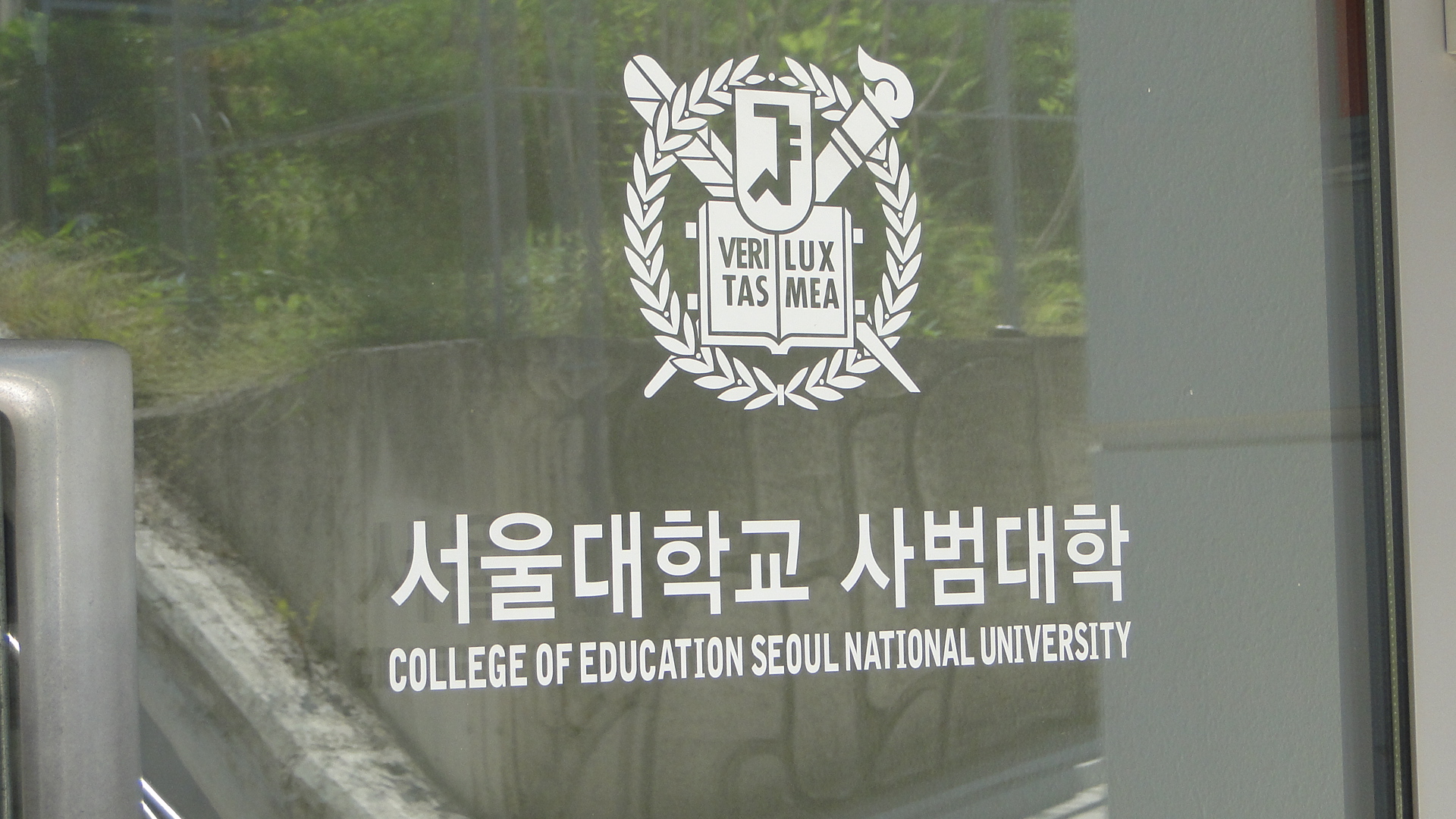
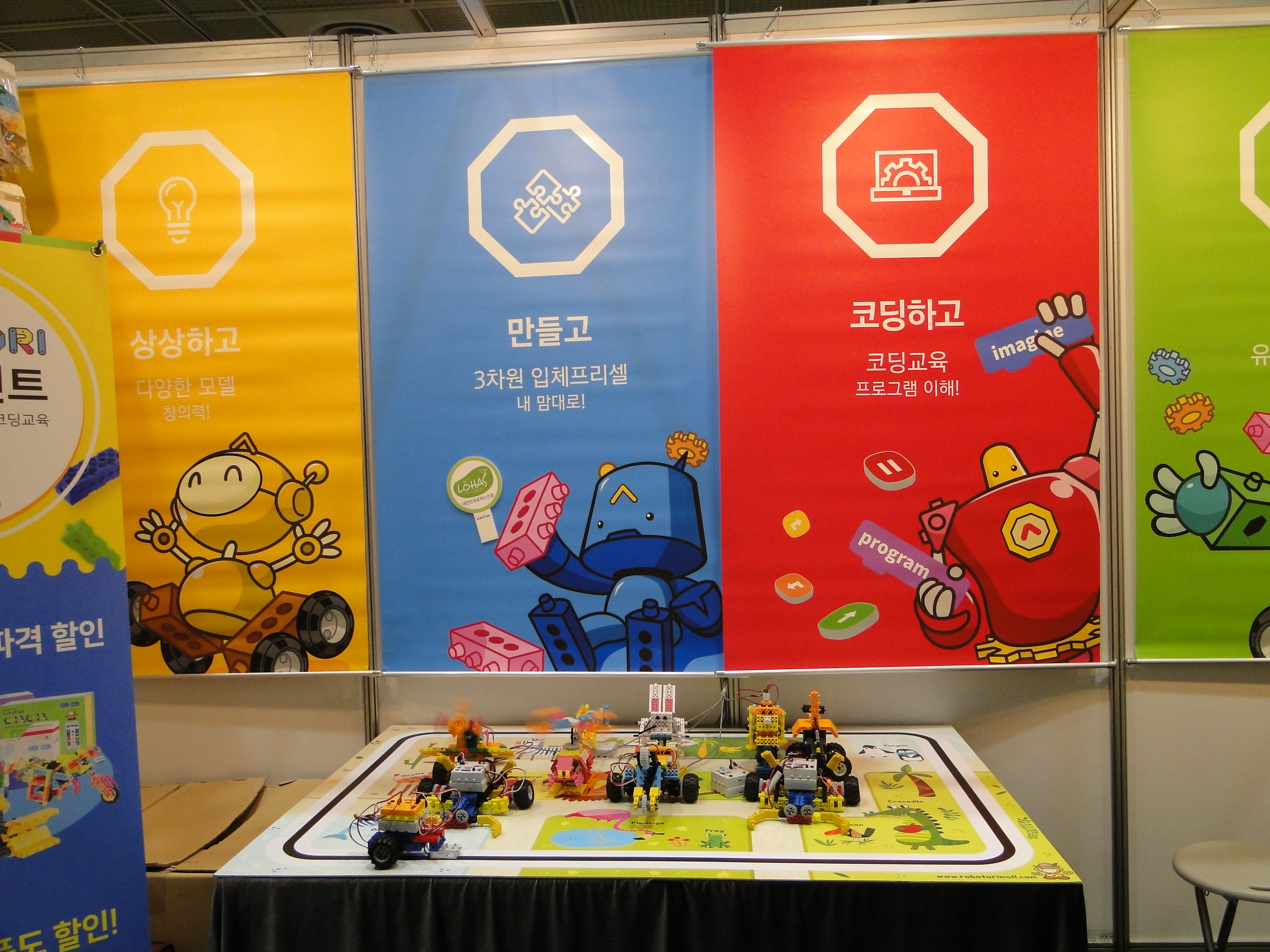
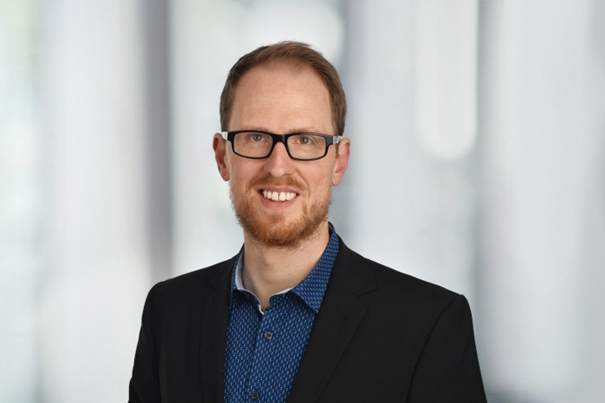 Felix Sühlmann-Faul
Felix Sühlmann-Faul 
 Dr. Hans Pongratz
Dr. Hans Pongratz 
 Dr. Klara Groß-Elixmann
Dr. Klara Groß-Elixmann 